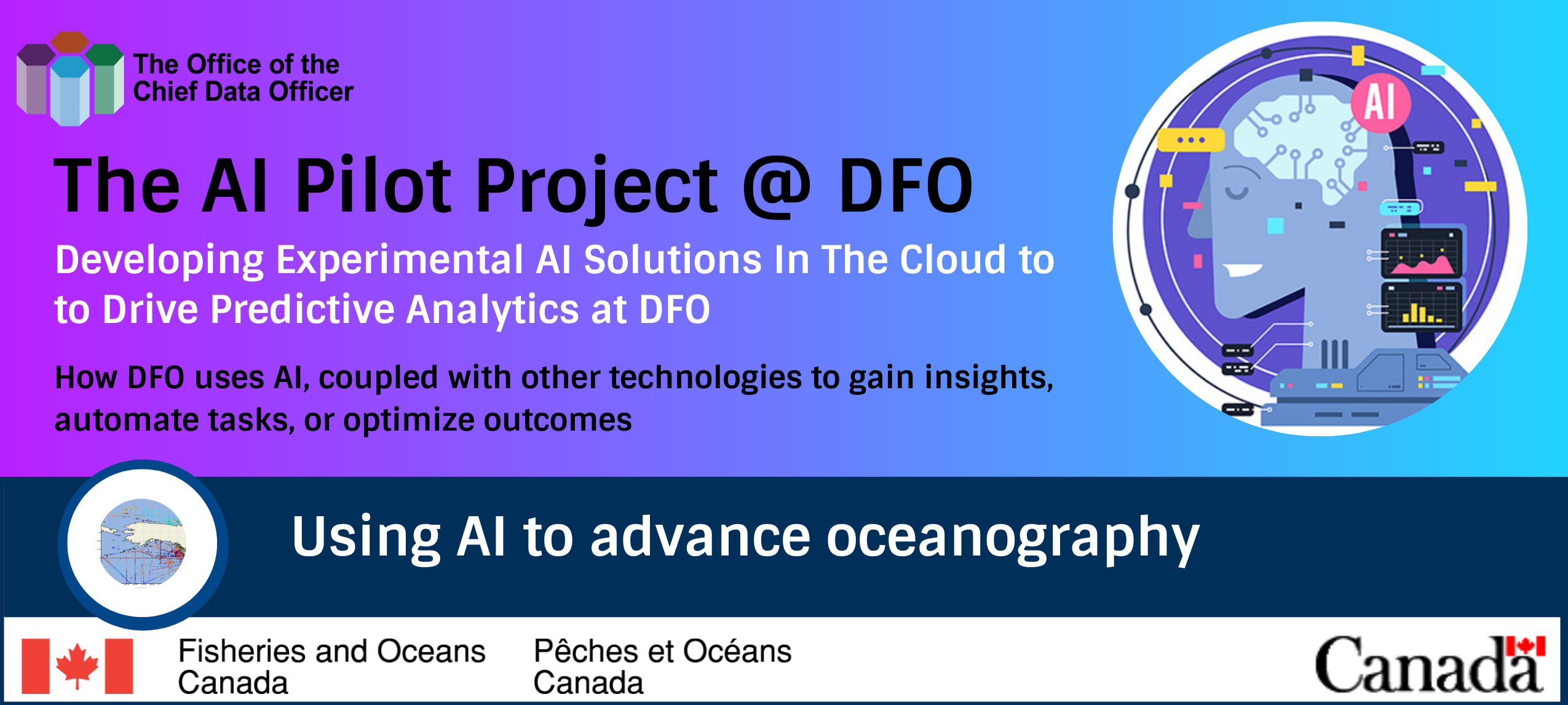Difference between revisions of "Using AI to advance oceanography"
| Line 29: | Line 29: | ||
Data-driven analysis approaches are better suited for such type of analysis. AI has the ability to sift through the data piles of ocean data to find the complex relation between the ocean observations. | Data-driven analysis approaches are better suited for such type of analysis. AI has the ability to sift through the data piles of ocean data to find the complex relation between the ocean observations. | ||
| − | + | Supported by the 2020 – 2021 Results Fund, a Proof of Concept (POC) was developed a predictive model to find (dis-)similarities between in situ multidimensional profiles of oceanographic data of the Pacific Ocean. The in situ Conductivity-Temperature-Depth (CTD) profiles are classified using the profile classification model <ref>https://pyxpcm.readthedocs.io/en/latest/index.html</ref>. Two sets of experiments where conducted. The first experiment clusters a total of 3602 CTD profiles, where the final data point is less than 1,000 dbar, according to their temperature value only. Results have shown that the dataset of temperature profiles contains 9 groups of vertically coherent heat patterns, or classes. Each of the temperature profile classes reveals unique and physically coherent heat distributions along the vertical axis. When mapped in space, each of the 9 classes is found to define an oceanic region, even if no spatial information was used in the model determination. In the second experiment, both temperature and salinity observations are considered. Results have shown that depending on the season, up to 15 classes are observed, with occasional classes that correspond to sensor failures. | |
== References == | == References == | ||
Revision as of 13:28, 17 December 2021
AI can provide a data-driven approach to analyze ocean data.
DFO has developed a predictive model to sift through the data
piles of ocean data to find (dis-)similarities between
multidimensional profiles of oceanographic data. The insights
gained from the model can be used to answer many questions
about dynamic changes in our oceans.
The Challenge

The Department of Fisheries and Oceans (DFO) Canada has been surveying Canada’s oceans to monitor the evolution of Canada’s oceans, as well as to perform scientific research. The department frequently collects ocean observations using in situ measurements. Ocean data is considered multidimensional data where ocean observations are collected at different depths of the ocean. The amount of ocean data and data dimensions are rising sharply. Scientists tried to use simulations to simulate the ocean environment. However, ocean simulation models don’t reflect the complex relationship between the different ocean observations. Moreover, current traditional ocean data analysis mostly uses manual classification and recognition. This can be resource-intensive, time-consuming, and requires a specific kind of expertise.
The Solution
Data-driven analysis approaches are better suited for such type of analysis. AI has the ability to sift through the data piles of ocean data to find the complex relation between the ocean observations.
Supported by the 2020 – 2021 Results Fund, a Proof of Concept (POC) was developed a predictive model to find (dis-)similarities between in situ multidimensional profiles of oceanographic data of the Pacific Ocean. The in situ Conductivity-Temperature-Depth (CTD) profiles are classified using the profile classification model [2]. Two sets of experiments where conducted. The first experiment clusters a total of 3602 CTD profiles, where the final data point is less than 1,000 dbar, according to their temperature value only. Results have shown that the dataset of temperature profiles contains 9 groups of vertically coherent heat patterns, or classes. Each of the temperature profile classes reveals unique and physically coherent heat distributions along the vertical axis. When mapped in space, each of the 9 classes is found to define an oceanic region, even if no spatial information was used in the model determination. In the second experiment, both temperature and salinity observations are considered. Results have shown that depending on the season, up to 15 classes are observed, with occasional classes that correspond to sensor failures.

